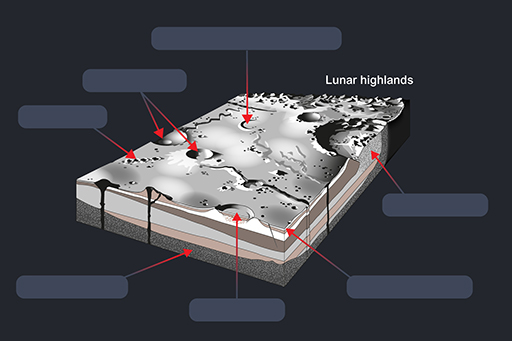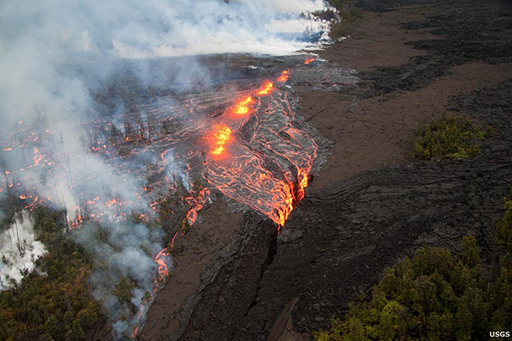1.7 Mare basalt formation
The mare basalts were formed by volcanic eruptions on the Moon, extruding low-viscosity basaltic lava which flowed to fill basins and craters. The lava flows are hundreds of metres thick and similar to basalt lava flows on Earth on Hawaii and Tenerife.
The lava was generated by melting deep within the Moon’s mantle. The heat source was radioactive decay of elements such as uranium, thorium and potassium. Lunar basalts have similar features to those found on Earth. The low-viscosity basaltic lava produces domes, made up of successive layers of lava flows. Lava channels, known as rilles, can also be observed on the Moon.
As mare basalt layers accumulated in the basins, the weight caused subsidence of the basin floor (successive lavas are labelled 1, 2 and 3 in the image). In turn the subsidence meant that later basalts tended to flow inwards, filling low-lying areas such as large impact crater scars. Two tectonic features accompany mare basalt fields. First, there are wrinkle ridges which form in areas of compression, often in the centre of basins where the surface buckles around features beneath the lavas, such as old impact craters. Second, there are grabens, which are areas of extension where the surface pulled apart along faults, creating parallel-sided valleys; these are more commonly formed at the edges of basins.
Activity 2 Test your understanding of the Moon’s surface features
For each image try to work out which features the empty labels refer to.
When you’re ready, select ‘Reveal answer’ to see a fully labelled version.
Volcanic features

Choose from these options:
- old, lava-flooded impact crater
- lava channel (rille)
- volcanic domes
- lava flows
- linear rille (graben)
- wrinkle ridge.
Answer

Impact features

Choose from these options:
- old, lava-flooded impact crater
- crater chain
- youthful craters
- brecciated rocks (formed by meteorite impact before lava flows)
- impact crater
- thin layer of regolith
- impact breccia.
Answer




